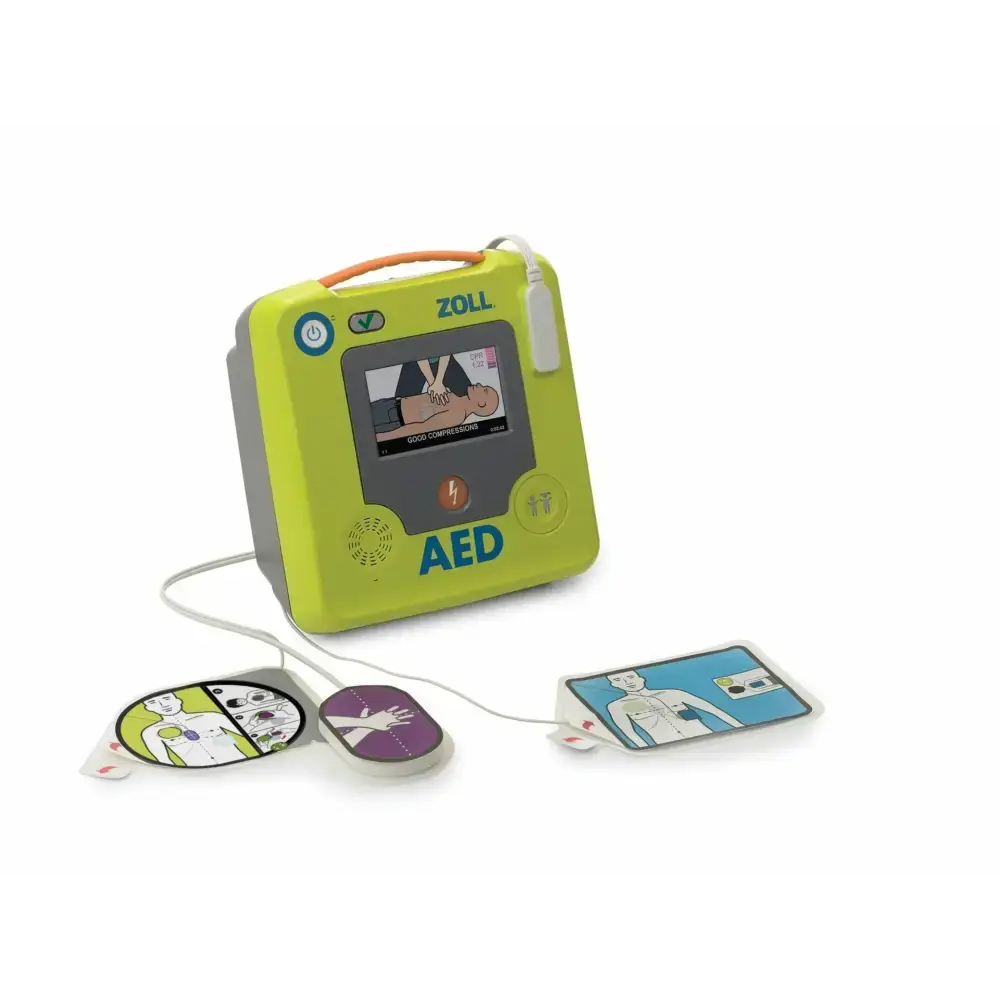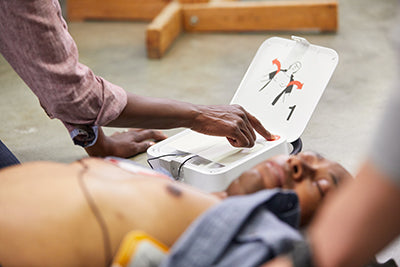Addressing Common Reasons for Not Having an AED On-Site
Despite the proven life-saving capabilities of Automated External Defibrillators (AEDs), many organizations and facilities still hesitate to implement these crucial devices. Let's examine the most common objections and misconceptions about AED implementation, and why these concerns shouldn't stand in the way of potentially saving lives.

"We Already Have Staff Trained in CPR"
One of the most frequent justifications for not having an AED is reliance on CPR training alone. While CPR is undoubtedly vital, the comparison of AED vs. CPR isn't an either/or situation—they work together. CPR maintains blood flow, but only an AED can restart a heart in cardiac arrest. Studies show that CPR combined with early defibrillation can increase survival rates by up to 75%.
"AEDs Are Too Expensive"
Cost concerns often top the list of objections. While it's true that AED price points can seem significant upfront, let's break down the actual investment:
- Initial AED cost in Canada typically ranges from $1,595 to $2,500
- Maintenance costs are minimal, primarily involving battery and pad replacement every 2-5 years
- Many suppliers offer financing options and package deals
- The cost becomes negligible when compared to the value of a human life
https://aed.ca/products/stryker-heartsine
"We're Close to Emergency Services"
The "AED near me" mindset—believing that proximity to emergency services eliminates the need for an on-site AED—can be dangerous. Consider these facts:
- Average emergency response times, even in urban areas, can exceed 8-10 minutes
- Survival rates decrease by 7-10% for every minute without defibrillation
- Even with an ambulance station nearby, factors like traffic and building access can delay response
- All available ambulances may already be out on calls
"AEDs Are Too Complicated to Use"
Concerns about complexity and AED certification requirements often deter organizations. However:
- Modern AEDs are designed for use by untrained individuals
- Voice prompts and visual guides make operation straightforward
- While training is beneficial, it's not typically required for basic use
- Many portable AED models are specifically designed for ease of use
"The Legal Requirements Are Unclear"
Uncertainty about AED requirements can lead to inaction. While regulations vary by province and industry, consider:
- Some facilities are now required by law to have AEDs
- Having an AED often provides liability protection rather than risk
- AED.ca and other resources can help navigate compliance requirements
"We Don't Have Space"
Space constraints are a common concern, but modern AEDs are:
- Compact and portable
- Wall-mountable
- Available in various sizes to suit different environments
- Designed to be visible and accessible while taking minimal space

"No One Here Is At Risk"
The assumption that cardiac emergencies won't happen in certain environments is dangerous. Consider:
- Sudden cardiac arrest can affect anyone, regardless of age or health status
- High-stress environments increase risk
- Physical exertion, even minimal, can trigger cardiac events
- Medical conditions aren't always known or visible
"Maintenance Is Too Demanding"
Concerns about ongoing maintenance requirements are often overstated:
- Modern AEDs perform regular self-tests
- Visual indicators show device status
- Basic maintenance checks are simple and quick
- Professional maintenance programs are available
Moving Forward: Solutions and Implementation
To overcome these barriers, consider these practical steps:
- Research and Compare
- Look for "AED near me" to find local suppliers
- Compare different models and their features
- Investigate AED certification options
- Review maintenance requirements
- Financial Planning
- Consider the AED cost as a long-term investment
- Explore group purchasing options
- Investigate potential tax benefits
- Implementation Strategy
- Develop a clear deployment plan
- Establish maintenance schedules
- Create training programs
- Set up proper documentation systems

Conclusion
While the concerns about implementing an AED program are understandable, they shouldn't prevent organizations from taking this crucial step toward safety. The real question isn't whether you can afford to have an AED—it's whether you can afford not to have one when it's needed.
Take action today:
- Research AED options
- Review your emergency response protocols
- Consider the value of having this life-saving device readily available
- Contact AED.ca They are Canada's AED Company and can answer any AED questions that you may have.
Remember, when it comes to sudden cardiac arrest, preparation can mean the difference between life and death. Don't let common misconceptions stand in the way of implementing this crucial safety measure.






